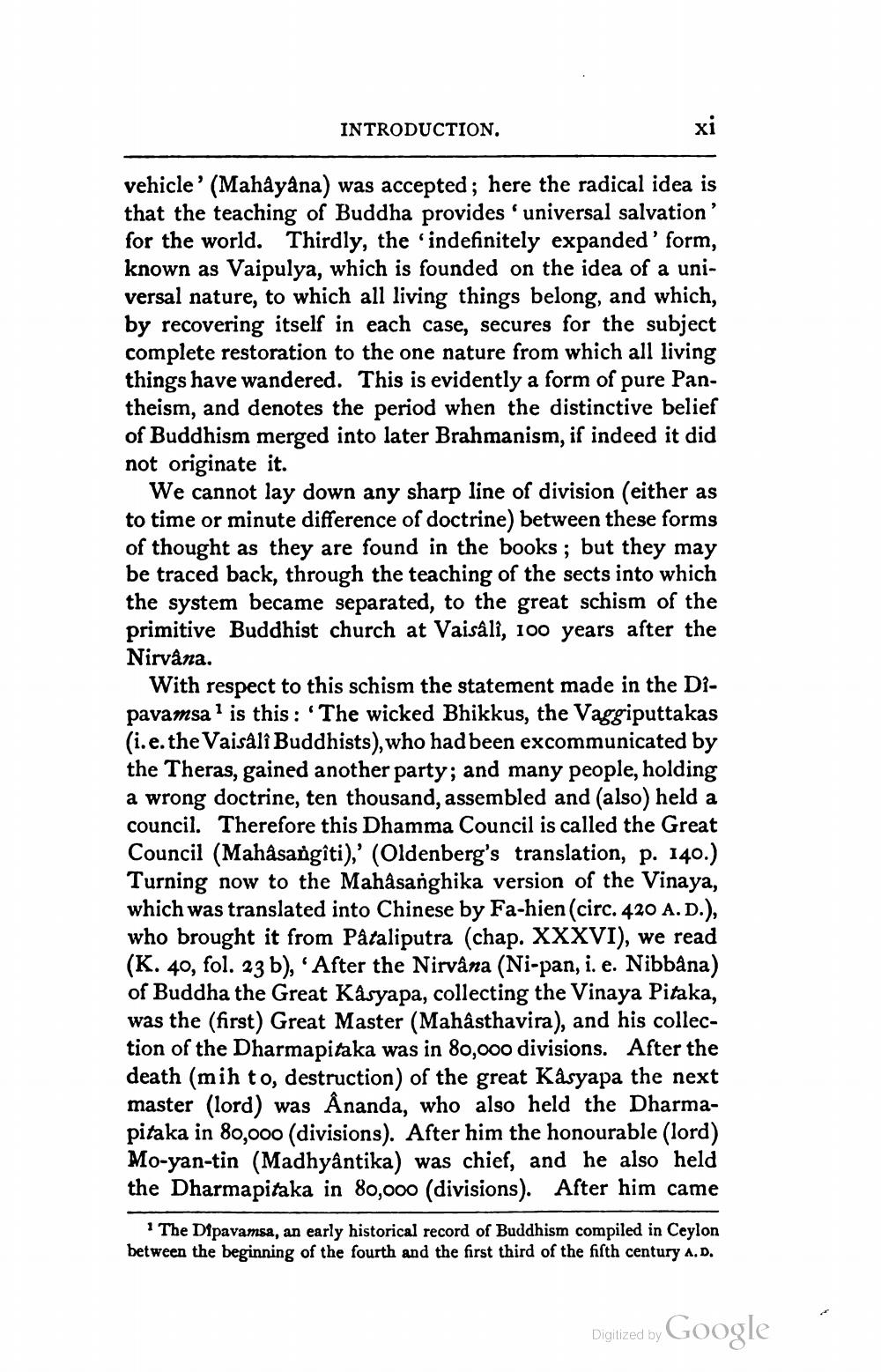________________
INTRODUCTION.
vehicle' (Mahayana) was accepted; here the radical idea is that the teaching of Buddha provides universal salvation' for the world. Thirdly, the 'indefinitely expanded' form, known as Vaipulya, which is founded on the idea of a universal nature, to which all living things belong, and which, by recovering itself in each case, secures for the subject complete restoration to the one nature from which all living things have wandered. This is evidently a form of pure Pantheism, and denotes the period when the distinctive belief of Buddhism merged into later Brahmanism, if indeed it did not originate it.
We cannot lay down any sharp line of division (either as to time or minute difference of doctrine) between these forms of thought as they are found in the books; but they may be traced back, through the teaching of the sects into which the system became separated, to the great schism of the primitive Buddhist church at Vaisâlî, 100 years after the Nirvana.
With respect to this schism the statement made in the D1pavamsa' is this: 'The wicked Bhikkus, the Vaggiputtakas (i.e. the Vaisalî Buddhists), who had been excommunicated by the Theras, gained another party; and many people, holding a wrong doctrine, ten thousand, assembled and (also) held a council. Therefore this Dhamma Council is called the Great Council (Mahasangîti),' (Oldenberg's translation, p. 140.) Turning now to the Mahasanghika version of the Vinaya, which was translated into Chinese by Fa-hien (circ. 420 A.D.), who brought it from Pataliputra (chap. XXXVI), we read (K. 40, fol. 23 b). After the Nirvana (Ni-pan, i.e. Nibbana) of Buddha the Great Kasyapa, collecting the Vinaya Pitaka, was the (first) Great Master (Mahâsthavira), and his collection of the Dharmapitaka was in 80,000 divisions. After the death (mih to, destruction) of the great Kasyapa the next master (lord) was Ânanda, who also held the Dharmapitaka in 80,000 (divisions). After him the honourable (lord) Mo-yan-tin (Madhyântika) was chief, and he also held the Dharmapitaka in 80,000 (divisions). After him came
* The Dipavamsa, an early historical record of Buddhism compiled in Ceylon between the beginning of the fourth and the first third of the fifth century A.D.
Digitized by Google




